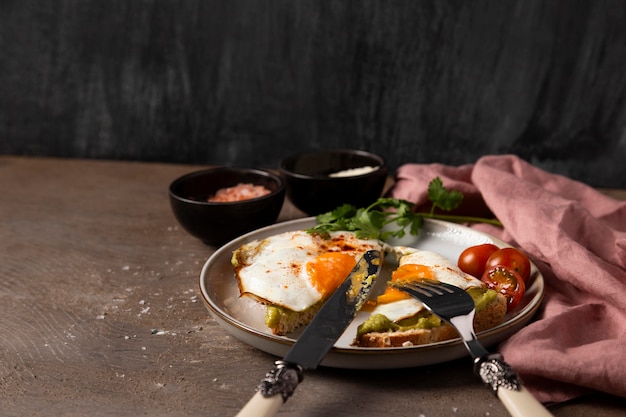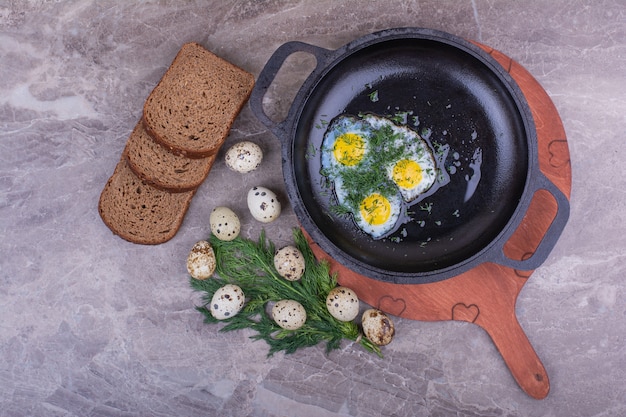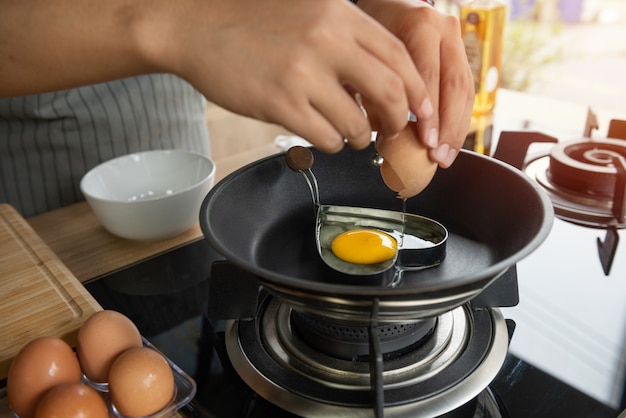Let's be honest, the quest for the perfect poached egg is a universal one. You know the dream: that flawlessly smooth white, cradling a perfectly runny yolk, ready to explode with rich flavour. It’s a culinary symphony in a single bite. But let me tell you, my friend, I've been there, in the trenches of poached egg disasters. My eggs were either rubbery, the yolks hard as nails, or the whites were a chaotic, spreading mess. But fear not! Through trial and error, I’ve cracked the code (pun intended!), and now I'm here to share my secrets. It all boils down to a few key techniques and a sprinkle of patience. So grab your saucepan, a trusty spoon, and let’s get cooking!
(Part 1) The Essential Arsenal

First things first, we need the right tools for the job. It’s not rocket science, but having the right equipment can make all the difference between a poached egg masterpiece and a culinary catastrophe.
1. The Saucepan: Choosing the Right Vessel
You’ll need a saucepan that's just the right size for your eggs. I personally prefer a medium-sized one, about 18cm in diameter. Too large, and the water won’t come to a simmer quickly enough; too small, and your eggs will be cramped and crowded, leading to uneven cooking.
2. The Spoon: Your Whirlpool Wizard
A large spoon is your essential sidekick in this culinary adventure. You’ll use it to create a swirling vortex, a gentle whirlpool, in the water. This helps the egg white form neatly around the yolk, creating that perfect, round shape. I find a slotted spoon works best, as it allows the excess water to drain away, preventing a soggy mess.
3. The Vinegar: A Secret Weapon
Now, this might sound unusual, but a splash of vinegar is a game-changer. It helps the egg white to set properly and prevents it from spreading out too much. It’s not about adding flavour, mate, it's all about the science! Vinegar gently acidifies the water, making it slightly more acidic, which aids in coagulation and helps the egg whites to firm up faster.
4. The ice bath: The Cooling Hero
This is a crucial step for achieving that velvety texture we all crave. After poaching, a quick dunk in an ice bath stops the cooking process, ensuring a silky yolk and preventing the white from becoming rubbery.
(Part 2) Egg Selection: Choosing Your Champions

Now that you've got your equipment ready, let's talk about the stars of the show: the eggs. Not all eggs are created equal, my friend. Here's what to keep in mind for maximum poached egg potential.
1. Freshness is Key: The Younger, The Better
fresh eggs are the foundation for a fantastic poached egg. They have a thicker white, which means they'll hold their shape better when they hit the water. If you've got older eggs, the white might be thinner and more prone to spreading, leading to a less than ideal result.
2. Room Temperature is Your Ally: A Little Warmth Goes a Long Way
Bring your eggs to room temperature before you start poaching. This simple step helps them to cook more evenly. Pop them out of the fridge about 30 minutes before you begin. Cold eggs are more likely to shock the water, making the white spread out uncontrollably.
(Part 3) The Poaching Process: A Step-by-Step Masterclass

Alright, now it’s time to get down to business. Follow these steps carefully, and you'll be on your way to achieving poached egg perfection.
1. Prepare Your Water: The Perfect Simmer
Fill your saucepan with about 2 inches of water. Add a splash of vinegar – just a tablespoon or two. Bring the water to a gentle simmer. You want it to be just bubbling, not roaring with excitement. Too vigorous a simmer will cause the egg white to cook too quickly and become tough.
2. Create a Whirlpool: The Egg's Gentle Embrace
Using your spoon, create a slow, steady whirlpool in the simmering water. This will help the egg white to gently swirl around the yolk, creating a neat, round shape. Think of it as a soothing embrace for the egg.
3. Crack Your Egg: With Care and Precision
Carefully crack your egg into a small bowl or ramekin. Double-check for any stray bits of shell, as they can cause problems later on. Now, gently lower the egg into the whirlpool. Don’t drop it, as this can lead to a less-than-perfect shape.
4. Cook the Egg: Patience is Key
Let the egg cook for about 3-4 minutes. You’ll see the white start to set around the yolk and the egg will gently float to the surface. Resist the urge to prod or poke it.
5. Check the Yolk: To Your Desired Doneness
After 3-4 minutes, use your slotted spoon to carefully lift the egg out of the water. Gently tilt the spoon to allow the excess water to drain. If the yolk is still very soft, let it cook for another minute or so. If you want a firmer yolk, cook for a little longer. Remember, it's all about personal preference.
6. The Ice Bath: Quenching the Heat
Once the egg is cooked to your liking, transfer it to an ice bath for a few seconds. This will immediately stop the cooking process and give the egg that beautiful, velvety texture. Don’t leave it in the ice bath for too long, or the yolk will become overly chilled.
7. Serve and Enjoy: A Culinary Triumph
Now your perfectly poached egg is ready for its moment of glory. Serve it on toast, in a salad, or simply as a stunning centerpiece on its own. Get creative and enjoy the delicious results of your hard work!
(Part 4) Poached Egg Tips and Tricks: The Secret Sauce
Over the years, I've picked up a few handy tips and tricks that have elevated my poached egg game to new heights. Here’s the inside scoop.
1. The Egg White Trick: Keeping It Together
If the egg white is starting to spread out too much, gently swirl the water around it with your spoon. This will help to keep it together and form a nice shape.
2. Salt and Pepper: A Touch of Seasoning
Don't forget to season your poached egg! Add some salt and pepper to the water as it's simmering, or season it directly after you've taken it out of the ice bath.
3. A Little Oil: Preventing Sticking
Some people like to add a little oil to the water, which helps to prevent the egg white from sticking to the bottom of the saucepan. I've tried it, but I find that a splash of vinegar works just fine for me. Ultimately, it comes down to personal preference.
(Part 5) Poaching Multiple Eggs: A Symphony of Flavor
You can totally poach multiple eggs at the same time. Just make sure there's enough space between them in the saucepan so that they don't stick together. Keep that whirlpool going to ensure even cooking for all your eggs.
1. Poaching Two Eggs: A Double Dose of Delight
For two eggs, you'll want to make sure there's about an inch of space between them in the water. You can gently swirl the water around them with your spoon to help them cook evenly.
2. Poaching Three or More Eggs: A Feast for the Senses
If you're poaching three or more eggs, you'll need a bigger saucepan. You might also want to consider using two saucepans if you're cooking a lot of eggs, to prevent overcrowding and ensure consistent results.
(Part 6) Poached Egg Variations: Taking it to the Next Level
Okay, so you've mastered the basic poached egg. Now let's get a little creative and explore some exciting variations that will elevate your breakfast game.
1. Poached Eggs with Herbs: A Burst of Freshness
Add a sprig of fresh herbs like dill or chives to the water while it's simmering. This will infuse the egg with a delicate flavour, creating a truly delightful culinary experience.
2. Poached Eggs with Chilli Flakes: A Touch of Heat
If you like a little heat, add a pinch of chilli flakes to the water. This will give the egg a subtle kick, adding a welcome dimension of flavour.
3. Poached Eggs with Smoked Paprika: Smoky Delights
For a smoky flavour that will tantalize your taste buds, add a pinch of smoked paprika to the water. It’s a game-changer, adding a depth of flavour that's hard to resist.
4. Poached Eggs with Garlic: Aromatic Elegance
If you're a garlic lover, add a clove of garlic to the water while it's simmering. It will infuse the eggs with a lovely garlicky aroma, adding a touch of sophistication to your dish.
(Part 7) poached egg recipes: A culinary journey
Now, let's delve into some delicious recipes that feature poached eggs as their star ingredient. Get ready to drool!
1. Eggs Benedict: A Classic Brunch Delight
This iconic brunch dish is a real treat. It's made with poached eggs, a decadent hollandaise sauce, and english muffins, creating a flavour sensation that's hard to resist.
2. Shakshuka: A Flavorful Middle Eastern and North African Delight
Shakshuka is a hearty and flavorful breakfast or brunch option that hails from the Middle East and North Africa. It's made with eggs poached in a rich tomato sauce, along with peppers, onions, and a symphony of spices.
3. Avocado Toast with Poached Eggs: A Healthy and Delicious Option
A simple and healthy breakfast or brunch option, avocado toast with poached eggs is a real crowd-pleaser. Creamy avocado and a perfectly poached egg make a winning combination.
4. Spinach and Ricotta Salad with Poached Eggs: A Light and Refreshing Salad
This light and refreshing salad is perfect for a summer lunch or dinner. It's made with fresh spinach, creamy ricotta cheese, and poached eggs, creating a symphony of textures and flavours.
5. Poached Eggs with smoked salmon: A Sophisticated and Delicious Combo
A classic pairing, poached eggs with smoked salmon is a sophisticated and delicious brunch or dinner option. The smoky flavour of the salmon perfectly complements the rich, creamy yolk.
(Part 8) FAQs: Your Poached Egg Questions Answered
You've got questions, I've got answers. Let's clear up some common queries about poached eggs, so you can conquer any culinary challenge with confidence.
1. What if my egg white spreads too much?
Don't panic! Gently swirl the water around the egg with your spoon to help the white form around the yolk. A splash of vinegar also helps to keep the egg white together.
2. Why is my yolk hard?
If your yolk is hard, you've probably overcooked the egg. Try cooking it for a shorter time next time.
3. Can I use older eggs?
While fresh eggs are best, you can use older eggs. They might be more prone to spreading out, so just keep an eye on them and adjust the cooking time as needed.
4. What if my egg cracks while I'm poaching it?
Don't worry, it happens! If the egg cracks, carefully scoop it out of the water and discard it.
5. How do I keep my poached egg warm?
If you're not serving your poached egg immediately, you can keep it warm in a bain-marie. Just place a bowl of hot water in a larger bowl and then put your poached egg in the smaller bowl.
(Part 9) Conclusion: A Poached Egg Mastery
Well, there you have it, my friend! My complete guide to perfect poached eggs every time. It's not as complicated as it might seem. Just follow these steps and you'll be on your way to creating those silky, runny, delicious poached eggs that will impress your friends and family. Remember, practice makes perfect, so don’t be afraid to experiment and find your own poached egg rhythm. Happy poaching!
Everyone is watching

Perfect Rice Every Time: The Ultimate Guide to Cooking Rice
Cooking TipsAs a self-proclaimed foodie, I've always been a bit obsessed with rice. It's the foundation of countless cuisi...

The Ultimate Guide to Cooking Asparagus: Tips, Techniques, and Recipes
Cooking TipsAsparagus. The mere mention of this spring delicacy conjures up images of vibrant green spears, crisp and burs...

Ultimate Guide to Cooking the Perfect Thanksgiving Turkey
Cooking TipsThanksgiving. Just the word conjures up images of overflowing tables laden with delicious food, the scent of r...

Prime Rib Roast Cooking Time Chart: Per Pound Guide
Cooking TipsPrime rib roast. Just the name conjures images of lavish dinners, crackling fires, and hearty laughter. It’s ...

Can You Cook Spaghetti with Gasoline? (The Shocking Truth)
Cooking TipsWe've all seen those crazy internet trends. You know, the ones that make you wonder, "Did someone actually try...
